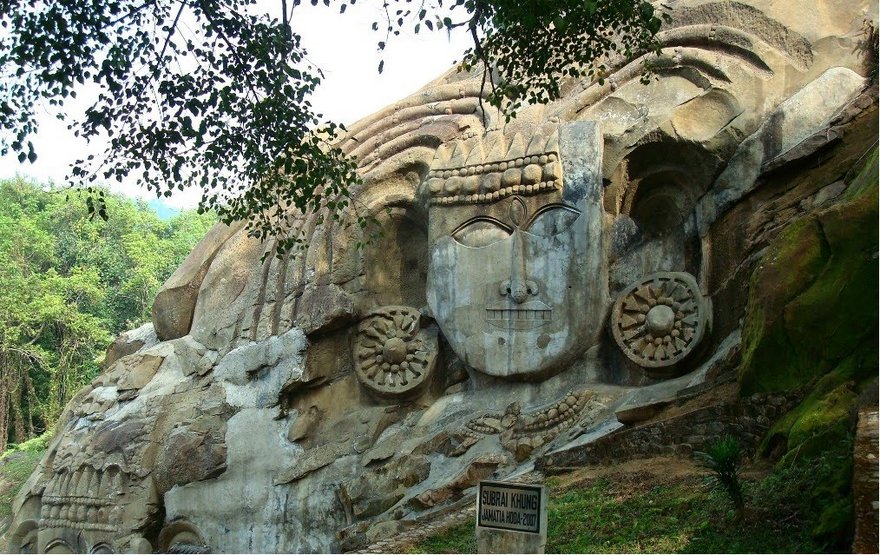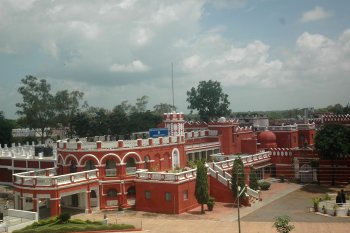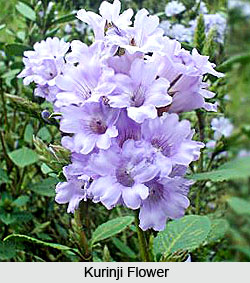GOA
Jagor Folk Dance
- the
traditional folk dance-drama
- performed
by the Hindu Kunbi and Christian Gauda community of Goa
- why
? -- to seek the Devine Grace for protection and prosperity of the
crop.
- Literal meaning of Jagor is “jagran” or wakeful nights.
- Belief ? -- The strong belief is that the night long performance, awakens the deities once a year and they continue to remain awake throughout the year guarding the village.

- Perni Jagor is the ancient mask dance – drama of Goa, performed by Perni families, using well crafted and painted wooden masks, depicting various animals, birds, super natural power, deities, demons and social characters.
- Gauda Jagor, is an impression of social life, that displays all the existing moods and modes of human characters.
- In
some places, Jagor performances are held with participation of both Hindus
and Christian community, whereby, characters are played by
Hindus and musical support is provided by Christian artistes.
GUJARAT
Gir Wildlife Sanctuary: Asiatic Lions
- The
tableau depicts some rare and exotic varieties along with Sidi community,
settled in the Gir forest, performing their traditional dance number.
About
Asiatic Lions and Gir !

- The
only natural abode of Asiatic lions at the Gir Wildlife Sanctuary is a
distinct identity of Gujarat.
- The
relentless efforts of the Government in collaborations with the cattle
owners have established a unique ecological balance between the flora and
fauna in the sanctuary.
- This
has resulted in a sharp rise in the number of the endangered species to
523 !
- The
cohabitation of man and wildlife is an important component of the Lions
Conservation Programme.
 |
| Siddi Community |
- As
many as 31 species of mammals are found in the Gir and over 300 species of
birds are also found in the Gir forest.
SIKKIM
Saga Dawa
- The
tableau depicts celebration of Buddha Jayanti in Sikkim, which is
popularly called Saga Dawa.

- It
is an important occasion which marks the Gautama Buddha’s birth,
enlightenment and attainment of Nirvana or Moksha.
- The
Buddhist communities of Sikkim on this day take a religious procession
carrying the chariot of Gautama Buddha and sacred Scriptures on their
shoulder and enchant “Om Mane Padme Hum”.

- These
Holy Scriptures are called “Kangyurtengyur”.
- The
prayer wheels in front of the trailor are religious symbol for doing
prayer.
- The wheels rotates clockwise and contain rolls of paper having mantras written on them.
JAMMU AND KASHMIR
Mera Gaon Mera Jahan
 |
- The tableau of Jammu and Kashmir, depicts rural development through technology and economic activities, besides making the villages clean and green.
- Mera Gaon Mera Jahan (my village my world) under Clean and Green Mission 2015-16 is the flagship scheme of the Government of India which aims at reaching ensuring sustainable rural development by making available environment friendly, latest technology.
- Under
the scheme, the Jammu and Kashmir State has adopted three villages i.e.
Apple village of Kashmir, Apricot village of Ladakh and Basmati village of
Jammu, to highlight different stages of seedlings, plantation, weeding,
cleaning packing etc.
- The
scheme also aims at creating awareness among the people about making
their villages clean, green, healthy, polythene free, besides
conserving natural resources.
RAJASTHAN
Hawa Mahal
- The
tableau showcases “Hawa Mahal” not as a monument, but as a “lively
Building”, which is full of eye-catching activities throughout the day and
night.
- Grandeur of Jaipur and pride of Rajasthan, this huge structure is famous as “Palace of Winds” in the entire world and is a world heritage site.

- It
was built in 1799 by the King of Jaipur Maharaja Sawai Pratap
Singh and was designed by the architect Lal Chand Usta.
- He
designed it in the form of the crown of Shri Krishna.
- Standing
50 feet high, this five storey huge building has 953 small windows known
as “Jharokhas”.
- It
reflects the striking fusion of Rajput and Mughal architecture style.
- In this tableau, Maharaja Sawai Pratap Singh is shown in the front, while the replica of “Hawa Mahal” is shown in the rear side of the tableau.
- Some
women are shown performing “Panihaarin” – the famous folk dance of
Jaipur.

- Famous
craft & arts stops are also showcased on the tableau along with some
tourists.
CHANDIGARH
“Open to give, open to receive”
- The
tableau depicts the smart, green and dream city of Chandigarh.
- Chandigarh, the dream city of India, was planned by the famous French Architect ‘Le Corbusier’.
 |
- Picturesquely located at the foothills of Shivaliks, the conception of the city has been formulated on the basis of four major functions - Working, Care of the Body, Spirit and Circulation.
- It is known as one of the best experiments in urban planning and modern architecture.
- The Capitol Complex, the focal point, both visually and
symbolically, is considered to be the most representative of
Le-Corbusier’s work.
- The structure of the High Court is based on a
simple system of columns, beams and slabs.
- The Chandigarh Legislative Assembly has 3 elements on the roof: the hyperboloid, the pyramid and the lift-tower.
- Le-Corbusier was big on symbols and it is said that the roofs sculptural elements are a reflection of the sun and the moon.
- Corbusier
defined the Open Hand as ‘a hand to give and a hand to receive’ and
projected it as city’s official emblem dictating the ideology of the city.
TRIPURA
Unakoti Sculptures: A Bewitching Tourists’ Attraction
- The
tableau Unakoti, a Shiva pilgrimage site, located about 186 km away from
Agartala and dates back to 7th to 9thcenturies
AD.

- The
word Unakoti, means one less than a crore.
- The tableau Unakoti, a Shiva pilgrimage site, located about 186 km away from Agartala and dates back to 7th to 9thcenturies AD.
- The
site consists of several huge vertical rock-cut carvings on a
hillside.
- The
site shows strong evidence of Buddhist Art along with Shiva head and
imposing Ganesha figures, having a height of 30 feet.
- The
rocky walls also have carved images of Hindu pantheon like, Durga and
Vishnu.
- The
Unakoti rock-cut carvings have the distinction of being the largest
bas-relief sculpture in India.
- Unakoti
has been included in the tourism map of India as a remarkable tourists’
resort.
- Common
pilgrims frequent the place and tourists from far and wide also converge
in Unakoti with much enthusiasm.
ODISHA
The Glorious Tradition of Boita Bandana
- The
tableau of Odisha presents the maritime activities and glorious tradition
of Boita-Bandana festival of ancient Odisha.
- This
more or less concentrates around the Sadhava tradition in Odisha, who were
great maritime traders and the tableau depicts their traditions.
- Life
size fiber statues depicting Sadhavas with boxes (Sindhuks) meant for
storage of goods and precious materials adorn this portion.
 |
- The Trolley portion carries the boat house and Sadhavas depicting life activities of trade.
- Ancient Odisha, popularly known as Kalinga was the
epicenter of the inland and foreign trade.
- The geographical setting of the State had supported the development of seaports like Tamralipti, Chelitalo, Palur, Pithunda along its coastline.
- The
mariners of Kalinga were endowed with sound knowledge of navigation and
had commercial, socio-cultural and political relations with South East
Asian countries like Srilanka, Java, Sumatra, Bali, Borneo, China, Burma,
Cambodia, Champa, Malaya and Thailand.
WEST BENGAL
Bauls of Bengal
- The
Bauls, a wandering minstrels community of Bengal, who follow a
distinctive spiritual and musical tradition that had its roots in the
Bhakti and Sufi movement.

- The Baul genre, recognised among the ‘Masterpieces of the Oral and Intangible Heritage of Humanity’ by UNESCO.
- The folk singers, coming both from Hindu and Muslim communities, spread the ideals of peace, brotherhood and mystic philosophy through simple words and metaphors.
- Baul is not a religion, but rather a way of life. Ignoring all kinds of religious social stigma and social barriers, Bauls try to find their or ‘Monner Manush’ (the Infinite Self), through music.Ektara, Dotara, Khamak, Nupur, Premjuri, Dubki etc. are commonly used instruments of Baul music.
- Baul
singers travel from one village to another or sometimes stay in ‘akharas’
or monasteries.
- Traditionally,
Baul songs talk about the relationship between man and the supreme Being
and the ways to attain spiritual liberation.
- But
in recent times, their music also conveys social messages and creates
awareness about government schemes in villages of Bengal.
- They
are an integral part of the Lok Prasar Prakalpa scheme of west Bengal,
under which financial assistance is being provided to folk artistes.
BIHAR
Champaran Satyagrah
- The
tableau of Bihar State presents Champaran Movement of 1917 against the
backdrop of the major role played by Mahatma Gandhi.
- The
main portion of the tableau shows Mahatma Gandhi in his youth in the year
1917.
- The
trailer portion depicts the picture of complete atrocity of the
Britishers, against poor farmers as shown.
- Use
of violence and force against hapless farmers is shown in the side murals
as well as the platform.
- A
depiction of indigo plantation around the main platform aptly sets the
pace for the theme.
- The
peasants of Champaran, were forced to grow the Indigo under the
teenkathia system.
- Under
which the peasants were forced to plant 3 out of 20 parts of his land with
indigo.
- One
local peasant leader, Rajkumar Shukla had invited Mahatma Gandhi to visit
Champaran.
- Gandhiji arrived in Champaran but was ordered by the District Magistrate of Champaran, WB Heycock, to leave the district.
- Gandhiji refused and
persisted and decided to commit Satyagraha.
- He
proceeded towards the Champaran, finally succeeding in the movement and
was called ‘Bapu’ since then.
KARNATAKA
Kodagu: The Coffee Land of Karnataka
- The
tableau depicts the erstwhile princely State of Karnataka, a major coffee
producing district, and is the mainstay of India becoming one among the
top six coffee producers in the world.

- Women
form the bulk of the labour force of roughly a million, who are directly
or indirectly engaged in the industry.
- Kodagu,
the coffee land of Karnataka, set amidst misty hills, sandal-wood forests
and vast tracts of coffee and tea plantations, is a picturesque sight to
behold, inhabited by Kodava community with distinct culture and traditions.
MADHYA PRADESH
White Tiger of Madhya Pradesh
- The
tableau of Madhya Pradesh presents a model of this rare breed of White
Tiger in wilderness, along with some tourists enjoying the flora and fauna
in the natural habitat of the state.
- Madhya Pradesh, with the largest forest cover in the country and one of the largest populations of tigers in the country, also has the honour of being the natural habitat of the rarest breed of tigers – the White Tiger.
- The White Tiger was first captured by king Martand Singh in the year 1951 in district of Rewa. All the White Tigers seen in the world are the progeny of that first captured tiger.
- Now,
Government of Madhya Pradesh is setting up the White Tiger Safari at a
place called Mukundpur Satna near the city of Rewa, where the people will
have the opportunity of watching the White Tigers in their natural
surroundings.
CHHATTISGARH
Khairagarh Music and Art University
- The tableau of Chhattisgarh depicts Khairagarh Music and Art University – one of the oldest universities in Asia dedicated to various forms of music, dance, fine arts and theatre.
 |
- Established in 1956, this university has made a strenuous effort to strike a balance between traditional and modern art in this era of globalization.
- The
university is committed to develop music and fine arts as economically
relevant career option among the students who come here from across the
world.
- Apart from education, the university provides research facility on wide range of subjects such as classical music, Indian classical musical instruments, folk dance, folk music, traditional sculpture and history of painting.
- The
front portion of the Chhattisgarh tableau presents a sculpture of
Murlidhar prepared by students and teachers of the university.
- It
also showcases the artistic building of the university along with various
forms of art and music.
TAMILNADU
Todas
- The
tableau depicts Toda tribe of Nilgiri district of Tamil Nadu identified as
one of the six primitive tribal groups of the state.
- They
speak a non-linguistic language and have unique appearance, manners and
customs.
 |
- The
Toda village is called a Mund.
- The
huts are small and half barrel-shaped, with a small doorway.
- The
village also has a unique hut, called “Tirierl” or dairy temple.
- The
sole occupation of Todas is Cattle-herding and dairy-work.
- The
traditional garment of Todas consists of a single piece of cloth with red
and black embroidery.
- Todas
are vegetarians.
- The
women makeup their hair with ringlet.
- The
mountain District of the Nilgiris is also home to the flowers called
“Kurinji” which blooms once in 12 years.
 |
UTTARAKHAND
Festival of Ramman

- The
Tableau depicts the festival of Ramman based on the story of ‘Ramayana’ in
Uttarakhand having Narshingh Devta ‘God’ at the front of the
tableau.
- The
festival has been declared World Heritage in 2009 by UNESCO.
- Artists
play the folk musical instrument of Uttarakhand “Bhankor” at the middle
part of tableau and temple of Bhumyal God and The Himalaya at the back
part are presented.
- Some selected contexts of Ramayan are performed with folk style in Ramman.
- Dance is performed wearing the mask at Temple complex of Bhumyal God in
night.
- There
are masks of various epical, historical and imaginative characters.
- The
masks are of two types. “Dhyo Pattar” and “Khyalari Pattar”.
- “Dhyo Pattar” mask and character is related to god.
- “Khyalari Pattar” are entertaining characters.
- Ramman is series of various events
of worships and rituals.
- Community
Worship, Devyatra, Folk Drama, Dances, Songs, Comedies, Fairs etc are held
here.
UTTAR PRADESH
Zardozi – the Unique Art of Embroidery

 |
- The
tableau depicts Zardozi one of the ancient and lavish embroidery
patronized in the past by the Nawabs of the Awadh and other royal
people.
- This
distinguished style of traditional Indian embroidery has been practiced
and passed on from generations, in various parts of Uttar Pradesh.
- Zardozi
is the main source of income for artisans of Lucknow and other adjoining
parts.
- These
products are exported to foreign countries also.
- Zardozi
embroidery is impressively ornamental and involves profound use of crusted
gold thread work.
- Initially,
the embroidery was done with pure silver wires and real gold leaves.
- However,
today, craftsmen make use of a combination of copper wire, with a golden
or silver polish, and a silk thread.
ASSAM
Rangoli Bihu
- The
Assam tableau showcases the local people of Assam engaged in celebration
of their important festival in the backdrop of a typical hut in an
Assamese village.
- In the courtyard, young boys and girls of Assam are seen performing traditional Bihu dance and an Assamese couple welcoming friends and relatives to their home for the festivities.
- Rongali Bihu or Bohag Bihu is
the most important festival of state of Assam.
- It
is celebrated in spring season during the month of April.
- Rangoli
Bihu festival also marks the beginning of the Assamese New Year.
 |



